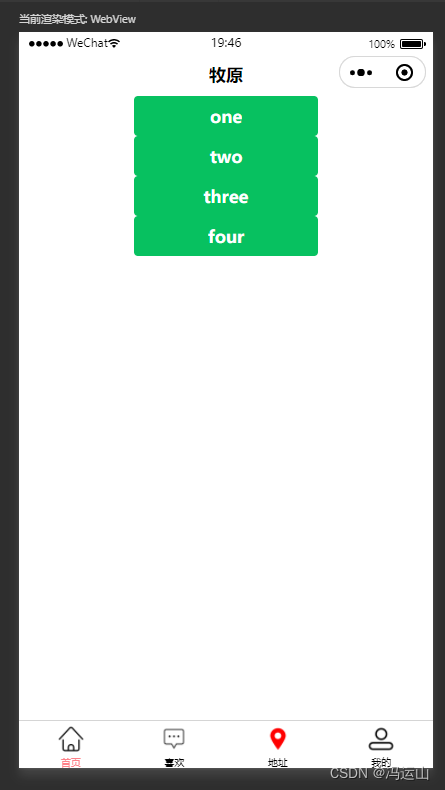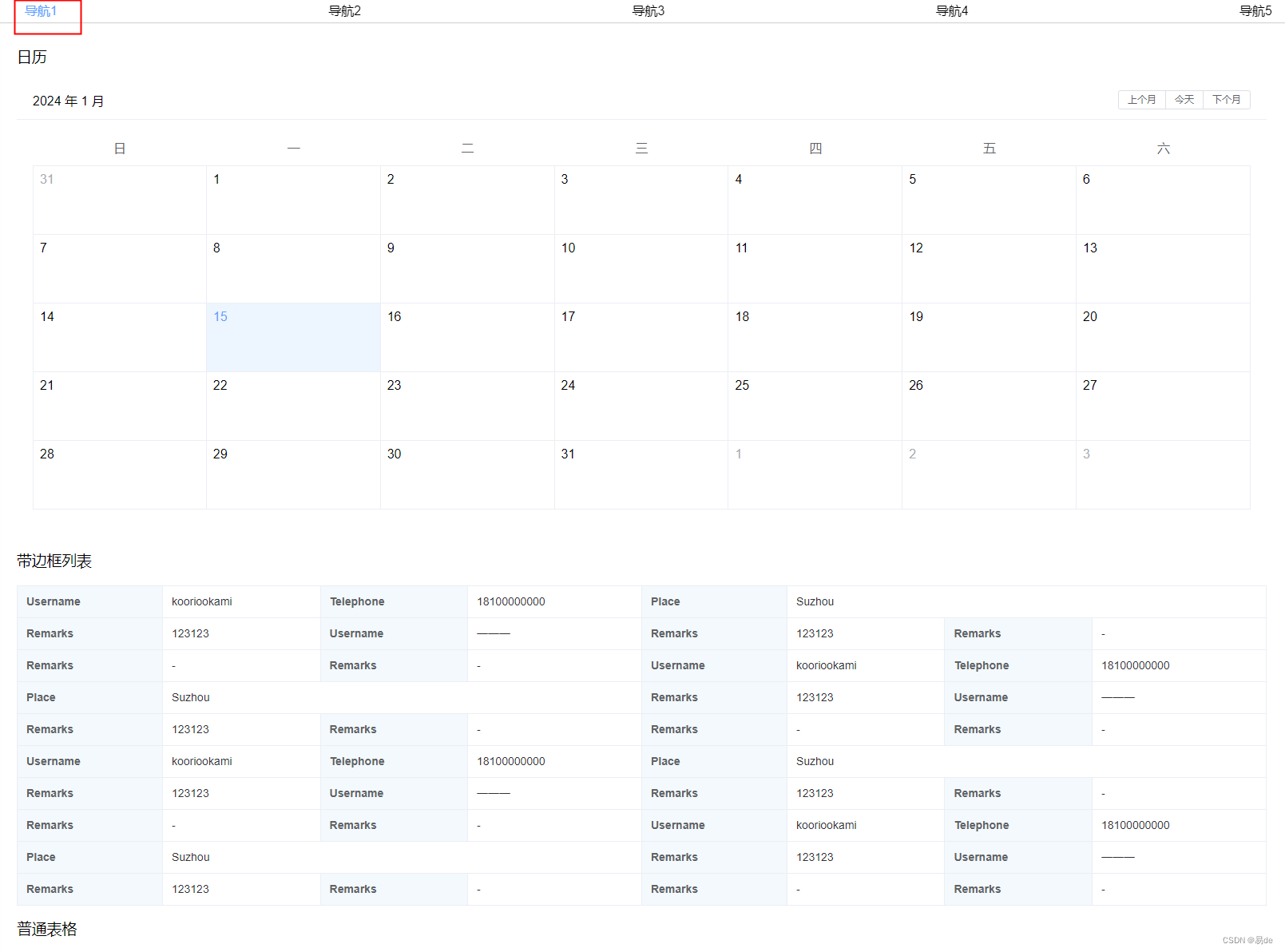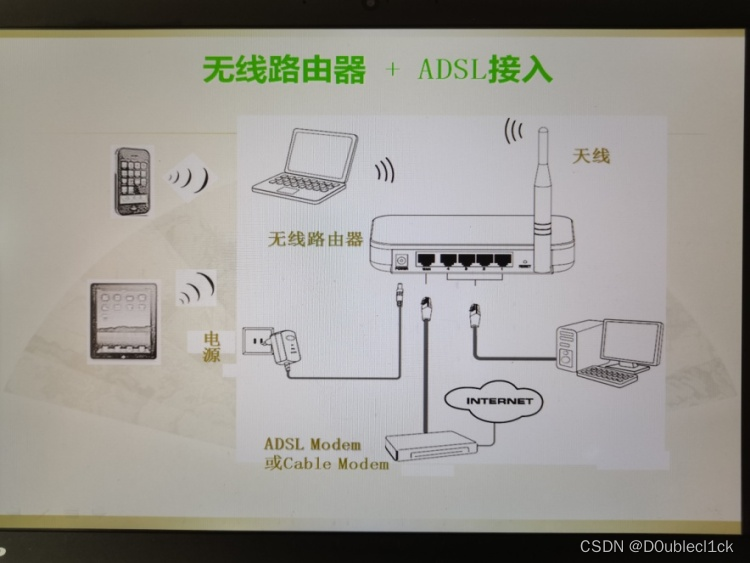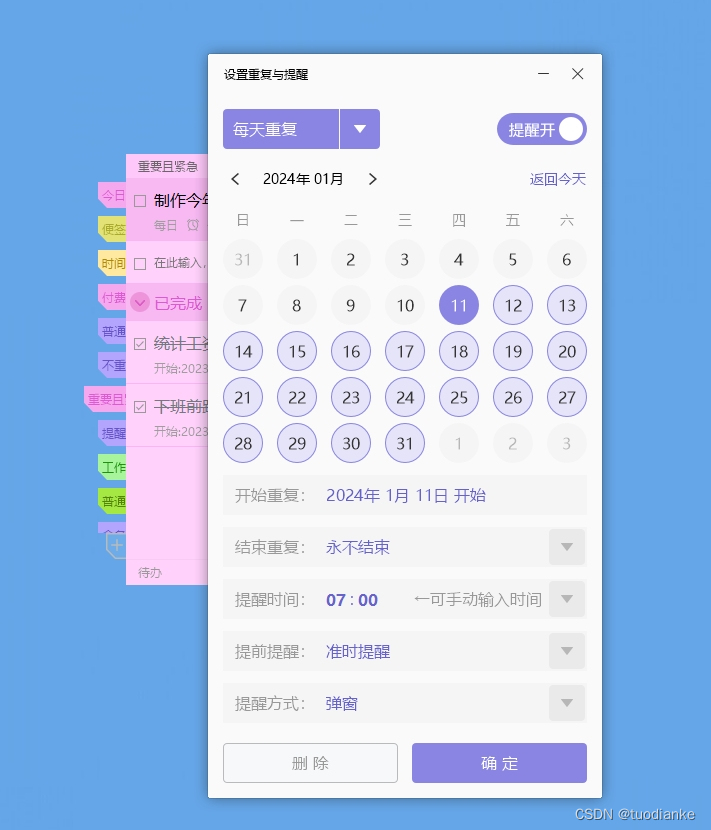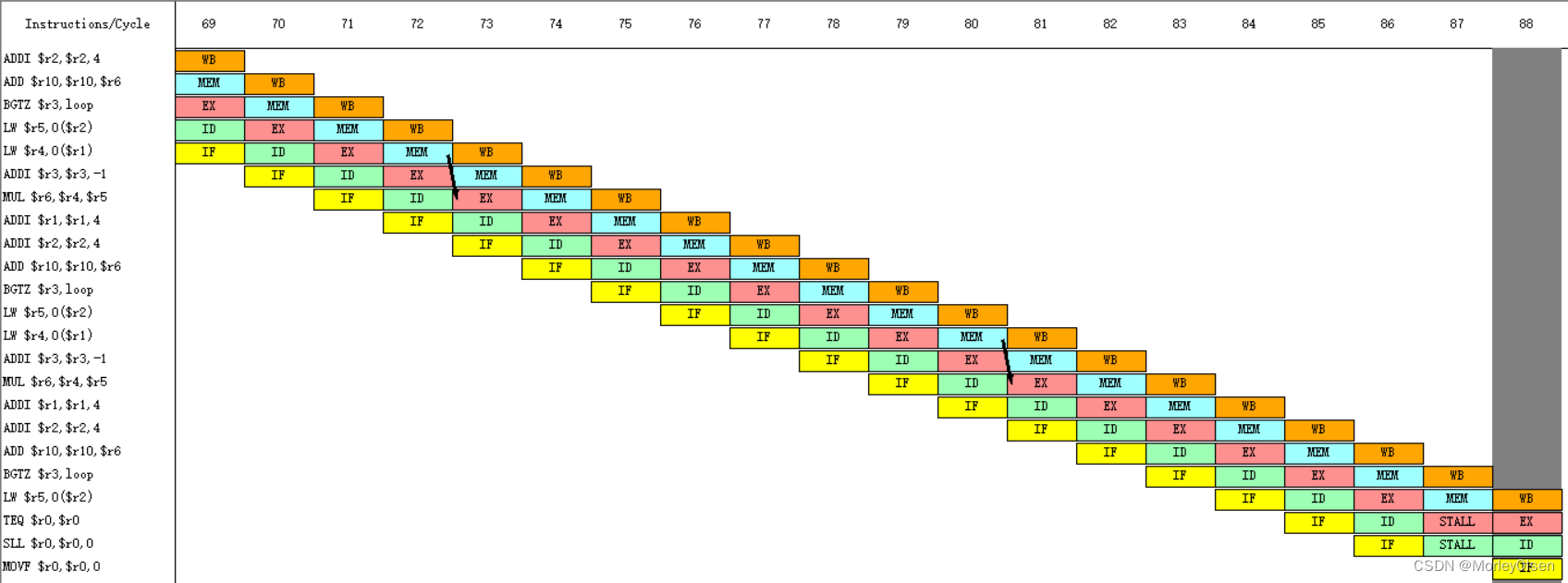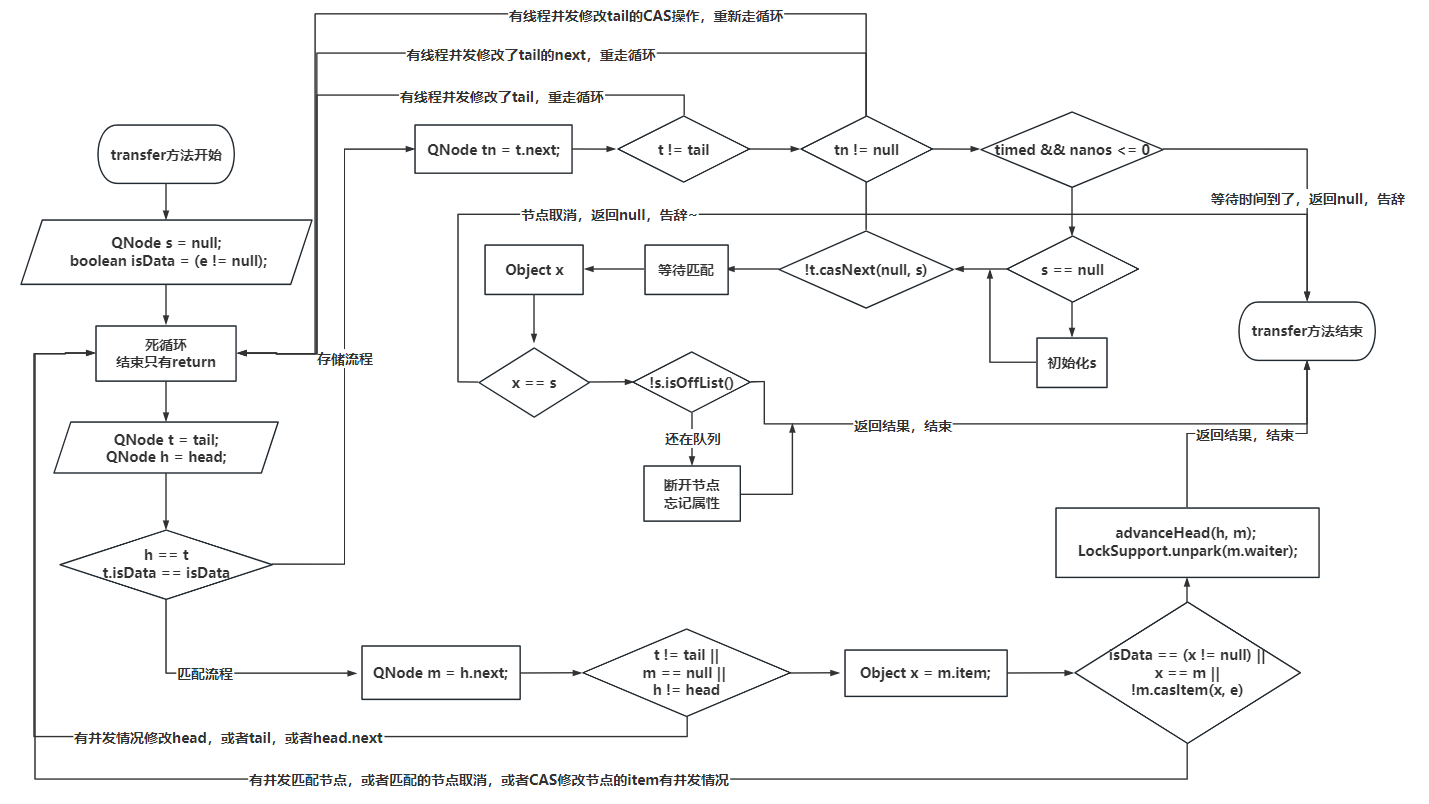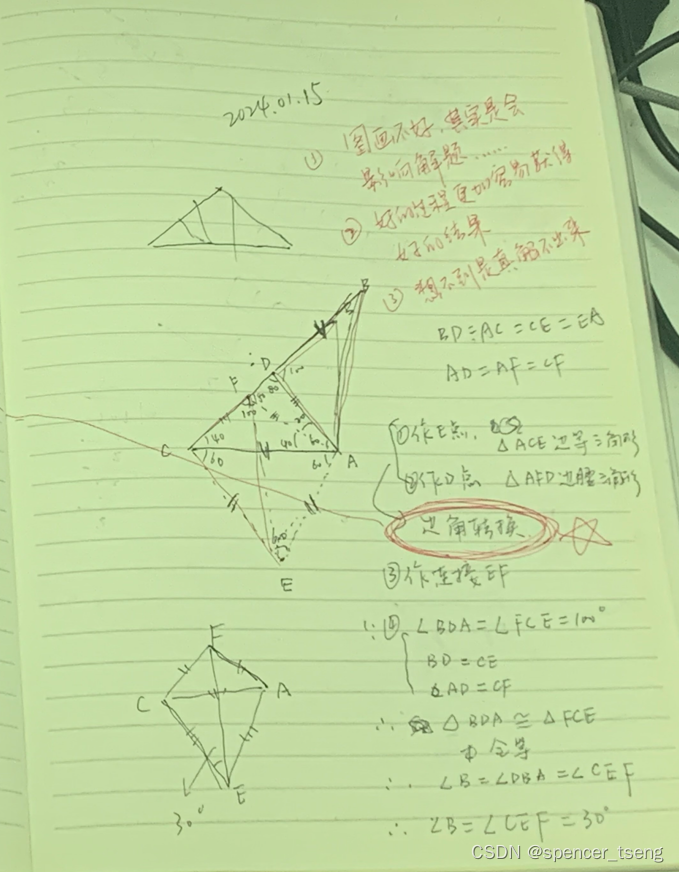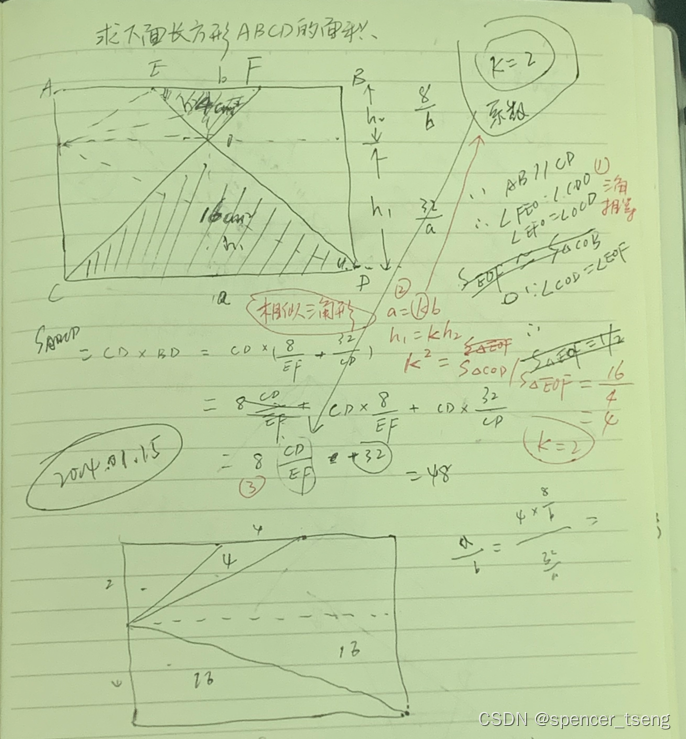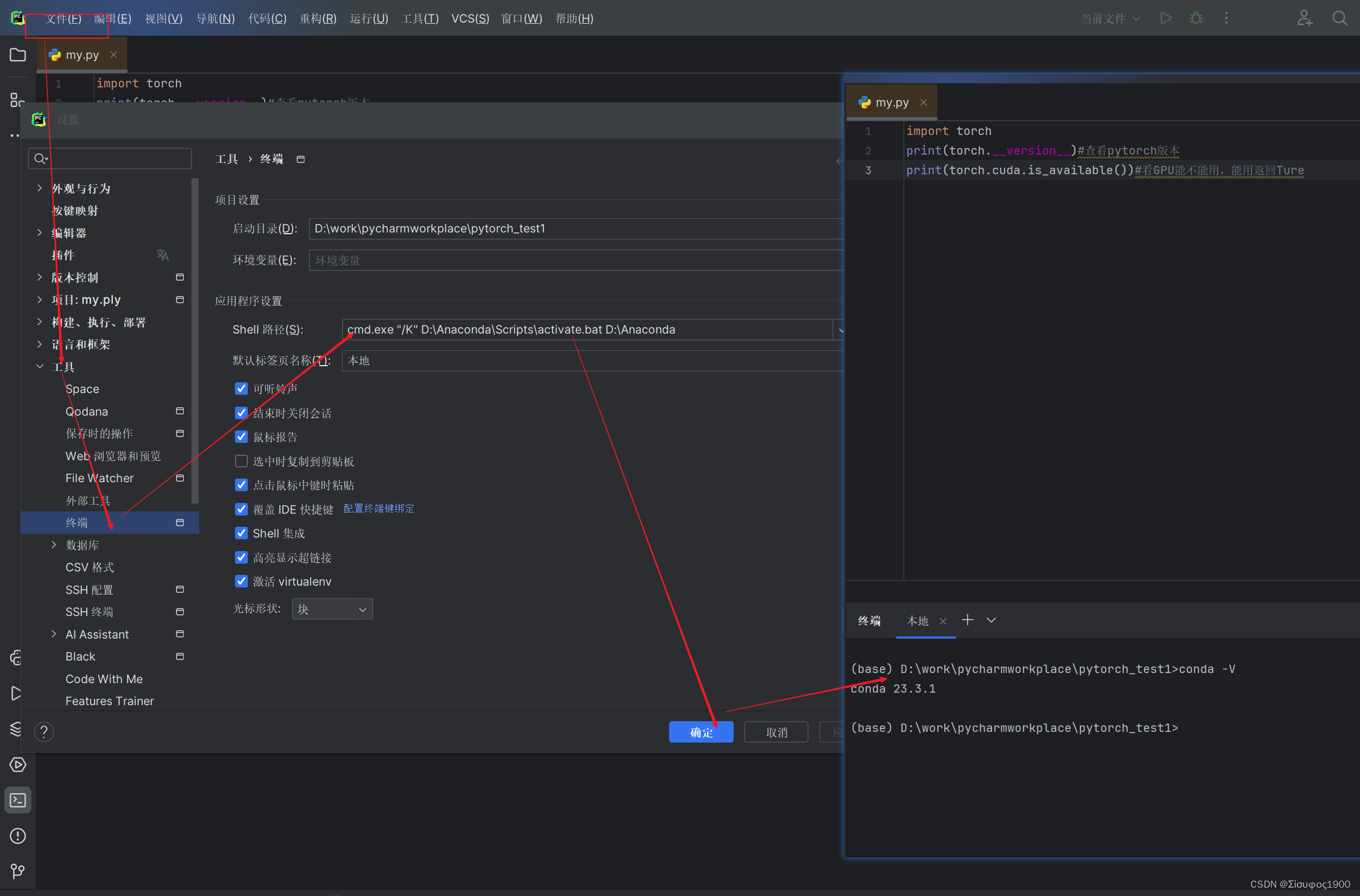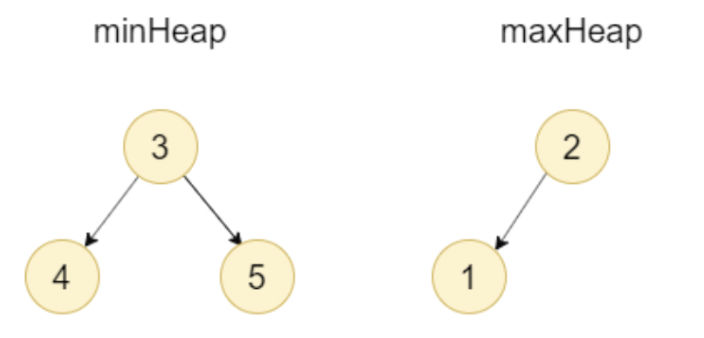一、JDBC概述
1 基本介绍

 2 简单模拟
2 简单模拟
package com.hspedu.jdbc.myjdbc;
/**
* @author 林然
* @version 1.0
* 我们规定的 jdbc 接口(方法)
*/
public interface JdbcInterface {
//连接
public Object getConnection() ;
//crud
public void crud();
//关闭连接
public void close();
}
package com.hspedu.jdbc.myjdbc;
/**
* @author 林然
* @version 1.0
* mysql 数据库实现了 jdbc 接口 [模拟] 【mysql 厂商开发】
*/
public class MysqlJdbcImpl implements JdbcInterface{
@Override
public Object getConnection() {
System.out.println("得到 mysql 的连接");
return null;
}
@Override
public void crud() {
System.out.println("完成 mysql 增删改查");
}
@Override
public void close() {
System.out.println("关闭 mysql 的连接");
}
}
package com.hspedu.jdbc.myjdbc;
/**
* @author 林然
* @version 1.0
*/
public class OracleJdbcImpl implements JdbcInterface{
@Override
public Object getConnection() {
System.out.println("得到 oracle 的连接 升级");
return null;
}
@Override
public void crud() {
System.out.println("完成 对 oracle 的增删改查");
}
@Override
public void close() {
System.out.println("关闭 oracle 的连接");
}
}
package com.hspedu.jdbc.myjdbc;
/**
* @author 林然
* @version 1.0
*/
public class TestJDBC {
public static void main(String[] args) {
//完成对 mysql 的操作
JdbcInterface jdbcInterface = new MysqlJdbcImpl();
jdbcInterface.getConnection(); //通过接口来调用实现类[动态绑定]
jdbcInterface.crud();
jdbcInterface.close();
//完成对 oracle 的操作
System.out.println("==============================");
jdbcInterface = new OracleJdbcImpl();
jdbcInterface.getConnection(); //通过接口来调用实现类[动态绑定]
jdbcInterface.crud();
jdbcInterface.close();
}
}
3 JDBC 带来的好处

 4 JDBC API
4 JDBC API

二、JDBC快速入门
1 JDBC 程序编写步骤

2 JDBC 第一个程序

package com.hspedu.jdbc;
import com.mysql.jdbc.Driver;
import java.sql.Connection;
import java.sql.SQLException;
import java.sql.Statement;
import java.util.Properties;
/**
* @author 林然
* @version 1.0
* 这是第一个 Jdbc 程序,完成简单的操作
*/
public class Jdbc01 {
public static void main(String[] args) throws SQLException {
//前置工作: 在项目下创建一个文件夹比如 libs
// 将 mysql.jar 拷贝到该目录下,点击 add to project ..加入到项目中
//1. 注册驱动
Driver driver = new Driver();
//2. 得到连接
// 老师解读
//(1) jdbc:mysql:// 规定好表示协议,通过 jdbc 的方式连接 mysql
//(2) localhost 主机,可以是 ip 地址
//(3) 3306 表示 mysql 监听的端口
//(4) hsp_db02 连接到 mysql dbms 的哪个数据库
//(5) mysql 的连接本质就是前面学过的 socket 连接
String url ="jdbc:mysql://localhost:3306/hsp_db02";
//将 用户名和密码放入到 Properties 对象
Properties properties = new Properties();
//说明 user 和 password 是规定好,后面的值根据实际情况写
properties.setProperty("user", "root");// 用户
properties.setProperty("password", "123456"); //密码
Connection connect = driver.connect(url, properties);
//3. 执行 sql
String sql = "insert into actor values(null, '刘德华', '男', '1970-11-11', '110')";
//statement 用于执行静态 SQL 语句并返回其生成的结果的对象
Statement statement = connect.createStatement();
int rows = statement.executeUpdate(sql); // 如果是 dml 语句,返回的就是影响行数
System.out.println(rows > 0 ? "成功" : "失败");
//4. 关闭连接资源
statement.close();
connect.close();
}
}
三、JDBC API
1 获取数据库连接 5 种方式
1.1 方式 1

1.2 方式 2

1.3 方式 3

1.4 方式 4

1.5 方式 5



1.6 课堂练习

package com.hspedu.jdbc;
import com.mysql.jdbc.Driver;
import org.junit.Test;
import java.io.FileInputStream;
import java.io.FileNotFoundException;
import java.io.IOException;
import java.sql.Connection;
import java.sql.DriverManager;
import java.sql.SQLException;
import java.sql.Statement;
import java.util.Properties;
/**
* @author 林然
* @version 1.0
* 分析 java 连接 mysql 的 5 中方式
*/
public class JdbcConn {
//方式 1
@Test
public void connect01() throws SQLException {
Driver driver = new Driver(); //创建 driver 对象
String url = "jdbc:mysql://localhost:3306/hsp_db02";
//将 用户名和密码放入到 Properties 对象
Properties properties = new Properties();
//说明 user 和 password 是规定好,后面的值根据实际情况写
properties.setProperty("user", "root");// 用户
properties.setProperty("password", "123456"); //密码
Connection connect = driver.connect(url, properties);
System.out.println(connect);
}
//方式 2
@Test
public void connect02() throws ClassNotFoundException, IllegalAccessException, InstantiationException, SQLException {
//使用反射加载 Driver 类 , 动态加载,更加的灵活,减少依赖性
Class<?> aClass = Class.forName("com.mysql.jdbc.Driver");
Driver driver =(Driver) aClass.newInstance();
String url = "jdbc:mysql://localhost:3306/hsp_db02";
//将 用户名和密码放入到 Properties 对象
Properties properties = new Properties();
//说明 user 和 password 是规定好,后面的值根据实际情况写
properties.setProperty("user", "root");// 用户
properties.setProperty("password", "123456"); //密码
Connection connect = driver.connect(url, properties);
System.out.println(connect);
}
@Test
public void connect05() throws IOException, ClassNotFoundException, SQLException, IllegalAccessException, InstantiationException {
//通过 Properties 对象获取配置文件的信息
Properties properties =new Properties();
properties.load(new FileInputStream("src\\mysql.properties"));
///获取相关的值
String user=properties.getProperty("user");
String password=properties.getProperty("password");
String driver = properties.getProperty("driver");
String url = properties.getProperty("url");
Class<?> aClass = Class.forName(driver);//建议写上
Driver driver1=(Driver)aClass.newInstance();
DriverManager.registerDriver(driver1);
Connection connection = DriverManager.getConnection(url, user, password);
Statement statement=connection.createStatement();
String sql1="create table news (id int primary key,`name` varchar(12))";
statement.executeUpdate(sql1);
String insert_sql="insert into news values(1,'1'),(2,'2'),(3,'3'),(4,'4'),(5,'5')";
statement.executeUpdate(insert_sql);
statement.close();
connection.close();
}
}
2 ResultSet[结果集]
2.1 基本介绍


2.2 应用实例

package com.hspedu.jdbc.resultset_;
import com.mysql.jdbc.Driver;
import java.io.FileInputStream;
import java.io.FileNotFoundException;
import java.io.IOException;
import java.sql.*;
import java.util.Properties;
/**
* @author 林然
* @version 1.0
* 演示 select 语句返回 ResultSet ,并取出结果
*/
public class ResultSet_ {
public static void main(String[] args) throws IOException, ClassNotFoundException, IllegalAccessException, InstantiationException, SQLException {
Properties properties=new Properties();
properties.load(new FileInputStream("src\\mysql.properties"));
//通过 Properties 对象获取配置文件的信息
String user = properties.getProperty("user");
String password =properties.getProperty("password");
String driver =properties.getProperty("driver");
String url= properties.getProperty("url");
//1. 注册驱动
Class<?> aClass = Class.forName(driver);
Driver driver1 =(Driver)aClass.newInstance();
DriverManager.registerDriver(driver1);
//2. 得到连接
Connection conn =DriverManager.getConnection(url,user,password);
//3. 得到 Statement
Statement statement =conn.createStatement();
String sql ="select id,name,sex,borndate from actor";
//执行给定的 SQL 语句,该语句返回单个 ResultSet 对象
ResultSet resultSet= statement.executeQuery(sql);
//5. 使用 while 取出数据
while (resultSet.next()){
// 让光标向后移动,如果没有更多行,则返回 false
int id= resultSet.getInt("id");
String name=resultSet.getString("name");
String sex=resultSet.getString("sex");
Date date =resultSet.getDate("borndate");
System.out.println(id + "\t" + name + "\t" + sex + "\t" + date);
}
//关闭连接
resultSet.close();
statement.close();
conn.close();
}
}
3 Statement
3.1 基本介绍

3.2 演示的sql语句
-- 演示 sql 注入
-- 创建一张表
CREATE TABLE admin ( -- 管理员表
NAME VARCHAR(32) NOT NULL UNIQUE, pwd VARCHAR(32) NOT NULL DEFAULT '') CHARACTER SET utf8; -- 添加数据
INSERT INTO admin VALUES('tom', '123');
-- 查找某个管理是否存在
SELECT *
FROM admin
WHERE NAME = 'tom' AND pwd = '123';
-- SQL
-- 输入用户名 为 1'or
-- 输入万能密码 为 or '1'= '1
SELECT *
FROM admin
WHERE NAME = '1' OR' AND pwd = 'OR '1'= '1' SELECT * FROM admin3.3 应用实例

package com.hspedu.jdbc.statement_;
import com.mysql.jdbc.Driver;
import java.io.FileInputStream;
import java.io.FileNotFoundException;
import java.io.IOException;
import java.sql.*;
import java.util.Properties;
import java.util.Scanner;
/**
* @author 林然
* @version 1.0
* 演示 statement 的注入问题
*/
public class Statement_ {
public static void main(String[] args) throws IOException, ClassNotFoundException, IllegalAccessException, InstantiationException, SQLException {
Scanner scanner = new Scanner(System.in);
//让用户输入管理员名和密码
System.out.print("请输入管理员的名字: "); //next(): 当接收到 空格或者 '就是表示结束
String admin_name = scanner.nextLine(); // 老师说明,如果希望看到 SQL 注入,这里需要用 nextLine
System.out.print("请输入管理员的密码: ");
String admin_pwd = scanner.nextLine();
Properties properties=new Properties();
properties.load(new FileInputStream("src\\mysql.properties"));
//通过 Properties 对象获取配置文件的信息
String user = properties.getProperty("user");
String password =properties.getProperty("password");
String driver =properties.getProperty("driver");
String url= properties.getProperty("url");
//1. 注册驱动
Class<?> aClass = Class.forName(driver);
Driver driver1 =(Driver)aClass.newInstance();
DriverManager.registerDriver(driver1);
//2. 得到连接
Connection conn =DriverManager.getConnection(url,user,password);
//3. 得到 Statement
Statement statement =conn.createStatement();
//4. 组织 SqL
String sql = "select name , pwd from admin where name ='"+admin_name+"' and pwd = '"+admin_pwd+"'";
ResultSet resultSet =statement.executeQuery(sql);
if(resultSet.next()){
System.out.println("恭喜, 登录成功");
}else {
System.out.println("对不起,登录失败");
}
//关闭连接
resultSet.close();
statement.close();
conn.close();
}
}

4 PreparedStatement
4.1 基本介绍

4.2 预处理好处

4.3 应用案例
package com.hspedu.jdbc.preparedstatement_;
import com.mysql.jdbc.Driver;
import java.io.FileInputStream;
import java.io.FileNotFoundException;
import java.io.IOException;
import java.sql.*;
import java.util.Properties;
import java.util.Scanner;
/**
* @author 林然
* @version 1.0
* 演示 PreparedStatement 使用
*/
public class PreparedStatement_ {
public static void main(String[] args) throws IOException, ClassNotFoundException, IllegalAccessException, InstantiationException, SQLException {
Scanner scanner = new Scanner(System.in);
//让用户输入管理员名和密码
System.out.print("请输入管理员的名字: "); //next(): 当接收到 空格或者 '就是表示结束
String admin_name = scanner.nextLine(); // 老师说明,如果希望看到 SQL 注入,这里需要用 nextLine
System.out.print("请输入管理员的密码: ");
String admin_pwd = scanner.nextLine();
Properties properties=new Properties();
properties.load(new FileInputStream("src\\mysql.properties"));
//通过 Properties 对象获取配置文件的信息
String user = properties.getProperty("user");
String password =properties.getProperty("password");
String driver =properties.getProperty("driver");
String url= properties.getProperty("url");
//1. 注册驱动
Class<?> aClass = Class.forName(driver);
Driver driver1 =(Driver)aClass.newInstance();
DriverManager.registerDriver(driver1);
//2. 得到连接
Connection conn =DriverManager.getConnection(url,user,password);
//3. 得到 PreparedStatement
//3.1 组织 SqL , Sql 语句的 ? 就相当于占位符
String sql = "select name , pwd from admin where name = ? and pwd = ?";
//3.2 preparedStatement 对象实现了 PreparedStatement 接口的实现类的对象
PreparedStatement preparedStatement =conn.prepareStatement(sql);
//3.3 给 ? 赋值
preparedStatement.setString(1,admin_name);
preparedStatement.setString(2,admin_pwd);
//4. 执行 select 语句使用 executeQuery
// 如果执行的是 dml(update, insert ,delete) executeUpdate()
// 这里执行 executeQuery ,不要在写 sql
ResultSet resultSet =preparedStatement.executeQuery();
if(resultSet.next()){
System.out.println("恭喜, 登录成功");
}else {
System.out.println("对不起,登录失败");
}
String sql1="insert into admin values(?,?)";
PreparedStatement preparedStatement1 =conn.prepareStatement(sql1);
preparedStatement1.setString(1,"linran");
preparedStatement1.setString(2,"123456");
//执行 dml 语句使用 executeUpdate
int rows=preparedStatement1.executeUpdate();
System.out.println(rows > 0 ? "执行成功" : "执行失败");
//关闭连接
preparedStatement1.close();
resultSet.close();
preparedStatement.close();
conn.close();
}
}
5 JDBC 的相关 API 小结


四、JDBC Utils
1 说明

2 jDBC Utils代码实现
package com.hspedu.jdbc.utils;
import java.io.FileInputStream;
import java.io.IOException;
import java.sql.*;
import java.util.Properties;
/**
* @author 林然
* @version 1.0
* 这是一个工具类,完成 mysql 的连接和关闭资源
*/
public class JDBCUtils {
//定义相关的属性(4 个), 因为只需要一份,因此,我们做出 static
private static String user; //用户名
private static String password; //密码
private static String url; //url
private static String driver; //驱动名
//在 static 代码块去初始化
static {
try {
Properties properties = new Properties();
properties.load(new FileInputStream("src\\mysql.properties"));
//读取相关的属性值
user = properties.getProperty("user");
password = properties.getProperty("password");
url = properties.getProperty("url");
driver = properties.getProperty("driver");
} catch (IOException e) {
//在实际开发中,我们可以这样处理
//1. 将编译异常转成 运行异常
//2. 调用者,可以选择捕获该异常,也可以选择默认处理该异常,比较方便.
throw new RuntimeException(e);
}
}
//连接数据库, 返回 Connection
public static Connection getConnection() {
try {
Class<?> aClass = Class.forName(driver);
Driver driver1 =(Driver)aClass.newInstance();
DriverManager.registerDriver(driver1);
return DriverManager.getConnection(url, user, password);
} catch (SQLException | ClassNotFoundException | InstantiationException | IllegalAccessException e) {
//1. 将编译异常转成 运行异常
//2. 调用者,可以选择捕获该异常,也可以选择默认处理该异常,比较方便.
throw new RuntimeException(e);
}
}
//关闭相关资源
/*
1. ResultSet 结果集
2. Statement 或者 PreparedStatement
3. Connection
4. 如果需要关闭资源,就传入对象,否则传入 null
*/
public static void close(ResultSet set, Statement statement, Connection connection) {
//判断是否为 null
try {
if (set != null) {
set.close();
}
if (statement != null) {
statement.close();
}
if (connection != null) {
connection.close();
}
} catch (SQLException e) {
//将编译异常转成运行异常抛出
throw new RuntimeException(e);
}
}
}
3 使用实例
package com.hspedu.jdbc.utils;
import org.junit.Test;
import java.sql.*;
/**
* @author 林然
* @version 1.0
* 该类演示如何使用 JDBCUtils 工具类,完成 dml 和 select
*/
public class JDBCUtils_Use {
@Test
public void testSelect() {
//1. 得到连接
Connection connection=JDBCUtils.getConnection();
//2. 组织一个 sql
String sql="select * from actor where id=?";
PreparedStatement preparedStatement=null;
ResultSet set = null;
try {
preparedStatement=connection.prepareStatement(sql);
preparedStatement.setInt(1,2);
set = preparedStatement.executeQuery();
while (set.next()){
int id = set.getInt("id");
String name = set.getString("name");
String sex = set.getString("sex");
Date borndate = set.getDate("borndate");
String phone = set.getString("phone");
System.out.println(id + "\t" + name + "\t" + sex + "\t" + borndate + "\t" + phone);
}
} catch (SQLException throwables) {
throwables.printStackTrace();
} finally {
//关闭资源
JDBCUtils.close(set, preparedStatement, connection);
}
}
@Test
public void testDML() {//insert , update, delete
//得到连接
Connection connection = (Connection) JDBCUtils.getConnection();
//2. 组织一个 sql
String sql = "update actor set name = ? where id = ?";
// 测试 delete 和 insert ,自己玩. PreparedStatement preparedStatement = null;
//3. 创建 PreparedStatement 对象
PreparedStatement preparedStatement=null;
try {
preparedStatement = (PreparedStatement) connection.prepareStatement(sql);
preparedStatement.setString(1,"周星驰");
preparedStatement.setInt(2,2);
preparedStatement.executeUpdate();
} catch (SQLException throwables) {
throwables.printStackTrace();
} finally {
//关闭
JDBCUtils.close(null,preparedStatement,connection);
}
}
}
五、事务
1 基本介绍

2 应用实例
- 模拟经典的转账业务

3 使用事务解决上述问题-模拟经典的转账业务
package com.hspedu.jdbc.transaction_;
import com.hspedu.jdbc.utils.JDBCUtils;
import org.junit.Test;
import java.sql.Connection;
import java.sql.PreparedStatement;
import java.sql.SQLException;
/**
* @author 林然
* @version 1.0
*/
public class Transaction_ {
//没有使用事务.
@Test
public void noTransaction() {
//操作转账的业务
//1. 得到连接
Connection connection = null;
//2. 组织一个 sql
String sql = "update account set banlance = banlance - 100 where id = 1";
String sql2 = "update account set banlance = banlance + 100 where id = 2";
PreparedStatement preparedStatement = null;
//3. 创建 PreparedStatement 对象
try {
connection = JDBCUtils.getConnection(); // 在默认情况下,connection 是默认自动提交
preparedStatement = connection.prepareStatement(sql);
preparedStatement.executeUpdate(); // 执行第 1 条 sql
int i = 1 / 0; //抛出异常
preparedStatement = connection.prepareStatement(sql2);
preparedStatement.executeUpdate(); // 执行第 3 条 sql
} catch (SQLException e) {
e.printStackTrace();
} finally {
//关闭资源
JDBCUtils.close(null, preparedStatement, connection);
}
}
//事务来解决
@Test
public void useTransaction() {
//操作转账的业务
//1. 得到连接
Connection connection = null;
//2. 组织一个 sql
String sql = "update account set banlance = banlance - 100 where id = 1";
String sql2 = "update account set banlance = banlance + 100 where id = 2";
PreparedStatement preparedStatement = null;
//3. 创建 PreparedStatement 对象
try {
connection = JDBCUtils.getConnection(); // 在默认情况下,connection 是默认自动提交
//将 connection 设置为不自动提交
connection.setAutoCommit(false); //开启了事务
preparedStatement = connection.prepareStatement(sql);
preparedStatement.executeUpdate(); // 执行第 1 条 sql
int i = 1 / 0; //抛出异常
preparedStatement = connection.prepareStatement(sql2);
preparedStatement.executeUpdate(); // 执行第 3 条 sql
//这里提交事务
connection.commit();
} catch (SQLException e) {
e.printStackTrace();
//这里我们可以进行回滚,即撤销执行的 SQL
//默认回滚到事务开始的状态. System.out.println("执行发生了异常,撤销执行的 sql");
try {
connection.rollback();
} catch (SQLException throwables) {
throwables.printStackTrace();
}
e.printStackTrace();
} finally {
//关闭资源
JDBCUtils.close(null, preparedStatement, connection);
}
}
}
六、批处理
1 基本介绍

2 应用实例

package com.hspedu.jdbc.batch_;
import com.hspedu.jdbc.utils.JDBCUtils;
import org.junit.Test;
import java.sql.Connection;
import java.sql.PreparedStatement;
/**
* @author 林然
* @version 1.0
* 演示 java 的批处理
*/
public class Batch_ {
//传统方法,添加 5000 条数据到 admin2
@Test
public void noBatch() throws Exception {
Connection connection = JDBCUtils.getConnection();
String sql = "insert into admin2 values(null, ?, ?)";
PreparedStatement preparedStatement = connection.prepareStatement(sql);
System.out.println("开始执行");
long start = System.currentTimeMillis();//开始时间
for (int i = 0; i < 5000; i++) {//5000 执行
preparedStatement.setString(1, "jack" + i);
preparedStatement.setString(2, "666");
preparedStatement.executeUpdate();
}
long end = System.currentTimeMillis();
System.out.println("传统的方式 耗时=" + (end - start));//传统的方式 耗时=10702
//关闭连接
JDBCUtils.close(null, preparedStatement, connection);
}
//使用批量方式添加数据
@Test
public void batch() throws Exception {
Connection connection = JDBCUtils.getConnection();
String sql = "insert into admin2 values(null, ?, ?)";
PreparedStatement preparedStatement = connection.prepareStatement(sql);
System.out.println("开始执行");
long start = System.currentTimeMillis();//开始时间
for (int i = 0; i < 5000; i++) {//5000 执行
preparedStatement.setString(1, "jack" + i);
preparedStatement.setString(2, "666");
//将sql语句加入p处理
preparedStatement.addBatch();
//当有 1000 条记录时,在批量执行
if((i + 1) % 1000 == 0) {//满 1000 条 sql
preparedStatement.executeBatch();
//清空一把
preparedStatement.clearBatch();
}
}
long end = System.currentTimeMillis();
System.out.println("批量方式 耗时=" + (end - start));//批量方式 耗时=108
//关闭连接
JDBCUtils.close(null, preparedStatement, connection);
}
}
七、连接池
1 5k 次连接数据库问题

package com.hspedu.jdbc.datasource;
import com.hspedu.jdbc.utils.JDBCUtils;
import org.junit.Test;
import java.sql.Connection;
/**
* @author 林然
* @version 1.0
*/
public class ConQuestion {
//代码 连接 mysql 5000 次
@Test
public void testCon() {
//看看连接-关闭 connection 会耗用多久
long start = System.currentTimeMillis();
System.out.println("开始连接.....");
for (int i = 0; i < 5000; i++) {
//使用传统的 jdbc 方式,得到连接
Connection connection = JDBCUtils.getConnection();
//做一些工作,比如得到 PreparedStatement ,发送 sql
//.......... //关闭
JDBCUtils.close(null, null, connection);
}
long end = System.currentTimeMillis();
System.out.println("传统方式 5000 次 耗时=" + (end - start));//传统方式 5000 次 耗时=7099
}
}
2 传统获取 Connection 问题分析



3 数据库连接池种类

4 C3P0 应用实例

package com.hspedu.jdbc.datasource;
import com.mchange.v2.c3p0.ComboPooledDataSource;
import org.junit.Test;
import java.beans.PropertyVetoException;
import java.io.FileInputStream;
import java.io.FileNotFoundException;
import java.io.IOException;
import java.sql.Connection;
import java.sql.SQLException;
import java.util.Properties;
/**
* @author 林然
* @version 1.0
* 演示 c3p0 的使用
*/
public class C3P0_ {
//方式 1: 相关参数,在程序中指定 user, url , password 等
@Test
public void testC3P0_01() throws IOException, PropertyVetoException, SQLException {
//1 建立一个数据源对象
ComboPooledDataSource comboPooledDataSource = new ComboPooledDataSource();
//2. 通过配置文件 mysql.properties 获取相关连接的信息
Properties properties = new Properties();
properties.load(new FileInputStream("src\\mysql.properties"));
//读取相关的属性值
String user = properties.getProperty("user");
String password = properties.getProperty("password");
String url = properties.getProperty("url");
String driver = properties.getProperty("driver");
//给数据源 comboPooledDataSource 设置相关的参数
//注意:连接管理是由 comboPooledDataSource 来管理
comboPooledDataSource.setDriverClass(driver);
comboPooledDataSource.setJdbcUrl(url);
comboPooledDataSource.setUser(user);
comboPooledDataSource.setPassword(password);
//设置初始化连接数
comboPooledDataSource.setInitialPoolSize(10);
//最大连接数
comboPooledDataSource.setMaxPoolSize(50);
//测试连接池的效率, 测试对 mysql 5000 次操作
long start = System.currentTimeMillis();
for (int i = 0; i < 5000; i++) {
Connection connection = comboPooledDataSource.getConnection();
//这个方法就是从 DataSource 接口实现的
//System.out.println("连接 OK");
connection.close();
}
long end = System.currentTimeMillis();
//c3p0 5000 连接 mysql 耗时=391
System.out.println("c3p0 5000 连接 mysql 耗时=" + (end - start));
}
//第二种方式 使用配置文件模板来完成
//1. 将 c3p0 提供的 c3p0.config.xml 拷贝到 src 目录下
//2. 该文件指定了连接数据库和连接池的相关参数
@Test
public void testC3P0_02() throws SQLException {
ComboPooledDataSource comboPooledDataSource = new ComboPooledDataSource("lin_ran");
//测试 5000 次连接 mysql
long start = System.currentTimeMillis();
System.out.println("开始执行....");
for (int i = 0; i < 5000; i++) {
Connection connection = comboPooledDataSource.getConnection();
//System.out.println("连接 OK~");
connection.close();
}
long end = System.currentTimeMillis();
//c3p0 的第二种方式 耗时=413
System.out.println("c3p0 的第二种方式(5000) 耗时=" + (end - start));//1917
}
}
5 Druid(德鲁伊)应用实例
package com.hspedu.jdbc.datasource;
import com.alibaba.druid.pool.DruidDataSourceFactory;
import org.junit.Test;
import javax.sql.DataSource;
import java.io.FileInputStream;
import java.io.FileNotFoundException;
import java.io.IOException;
import java.sql.Connection;
import java.util.Properties;
/**
* @author 林然
* @version 1.0
* 测试 druid 的使用
*/
public class Druid_ {
@Test
public void testDruid() throws Exception {
//1. 加入 Druid jar 包
//2. 加入 配置文件 druid.properties , 将该文件拷贝项目的 src 目录
//3. 创建 Properties 对象, 读取配置文件
Properties properties = new Properties();
properties.load(new FileInputStream("src\\druid.properties"));
//4. 创建一个指定参数的数据库连接池, Druid 连接池
DataSource dataSource = DruidDataSourceFactory.createDataSource(properties);
long start = System.currentTimeMillis();
for (int i = 0; i < 5000; i++) {
Connection connection = dataSource.getConnection();
System.out.println(connection.getClass());
//System.out.println("连接成功!");
connection.close();
}
long end = System.currentTimeMillis();
//druid 连接池 操作 5000 耗时=412
System.out.println("druid 连接池 操作 500000 耗时=" + (end - start));//539
}
}
6 将 JDBCUtils 工具类改成 Druid(德鲁伊)实现

package com.hspedu.jdbc.datasource;
import org.junit.Test;
import java.sql.*;
/**
* @author 林然
* @version 1.0
*/
public class JDBCUtilsByDruid_USE {
@Test
public void testSelect() throws SQLException {
System.out.println("使用 druid 方式完成");
//1. 得到连接
Connection connection =JDBCUtilsByDruid.getConnection();
//
String sql = "select * from actor where id >= ?";
PreparedStatement preparedStatement = null;
//3. 创建 PreparedStatement 对象
ResultSet set = null;
try {
preparedStatement=connection.prepareStatement(sql);
preparedStatement.setInt(1,1);
//给?号赋值
//执行, 得到结果集
set=preparedStatement.executeQuery();
while (set.next()){
int id = set.getInt("id");
String name = set.getString("name");//getName()
String sex = set.getString("sex");//getSex()
Date borndate = set.getDate("borndate");
String phone = set.getString("phone");
System.out.println(id + "\t" + name + "\t" + sex + "\t" + borndate + "\t" + phone);
}
} catch (SQLException throwables) {
throwables.printStackTrace();
} finally {
//关闭资源
JDBCUtilsByDruid.close(set, preparedStatement, connection);
}
}
}
package com.hspedu.jdbc.datasource;
import com.alibaba.druid.pool.DruidDataSourceFactory;
import javax.sql.DataSource;
import java.io.FileInputStream;
import java.sql.Connection;
import java.sql.ResultSet;
import java.sql.SQLException;
import java.sql.Statement;
import java.util.Properties;
/**
* @author 林然
* @version 1.0
* 基于 druid 数据库连接池的工具类
*/
public class JDBCUtilsByDruid {
public static DataSource ds;
//在静态代码块完成 ds 初始化
static {
Properties properties = new Properties();
try {
properties.load(new FileInputStream("src\\druid.properties"));
ds = DruidDataSourceFactory.createDataSource(properties);
} catch (Exception e) {
e.printStackTrace();
}
}
//编写 getConnection 方法
public static Connection getConnection() throws SQLException {
return ds.getConnection();
}
//关闭连接, 老师再次强调: 在数据库连接池技术中,close 不是真的断掉连接
//而是把使用的 Connection 对象放回连接池
public static void close(ResultSet resultSet, Statement statement, Connection connection) throws SQLException {
try {
if (resultSet != null) {
resultSet.close();
}
if (statement != null) {
statement.close();
}
if (connection != null) {
connection.close();
}
} catch (SQLException e) {
throw new RuntimeException(e);
}
}
}
八 Apache--DBUtils
1 先分析一个问题

 2 用自己的土方法来解决
2 用自己的土方法来解决

 3 基本介绍
3 基本介绍

4 应用实例

package com.hspedu.jdbc.datasource;
import org.apache.commons.dbutils.QueryRunner;
import org.apache.commons.dbutils.handlers.BeanHandler;
import org.apache.commons.dbutils.handlers.BeanListHandler;
import org.apache.commons.dbutils.handlers.ScalarHandler;
import org.junit.Test;
import java.sql.*;
import java.util.List;
/**
* @author 林然
* @version 1.0
*/
public class DBUtils_USE {
//使用apache-DBUtils 工具类 +druid完成对表的crud的操作
@Test
public void testQueryMany() throws SQLException {//返回结果是多行的情况
//1 得到;连接 (druid)
Connection connection =JDBCUtilsByDruid.getConnection();
//2 使用DBUtils的类和接口,先引入DBUtils的jar文件 加入到本project中
//3 创建QueryRunner
QueryRunner queryRunner=new QueryRunner();
//4 就可以执行相关的方法,返回ArraryList结果集合
String sql="select * from actor where id >=?";
// 老韩解读
//(1) query 方法就是执行 sql 语句,得到 resultset ---封装到 --> ArrayList 集合中
//(2) 返回集合
//(3) connection: 连接
//(4) sql : 执行的 sql 语句
//(5) new BeanListHandler<>(Actor.class): 在将 resultset -> Actor 对象 -> 封装到 ArrayList
// 底层使用反射机制 去获取 Actor 类的属性,然后进行封装
//(6) 1 就是给 sql 语句中的? 赋值,可以有多个值,因为是可变参数 Object... params
//(7) 底层得到的 resultset ,会在 query 关闭, 关闭 PreparedStatment
List<Actor> list= queryRunner.query
(connection,sql,new BeanListHandler<>(Actor.class),1);
System.out.println("输出集合的信息");
for (Actor actor : list) {
System.out.print(actor);
}
JDBCUtilsByDruid.close(null,null,connection);
}
@Test
public void testQuerySingle() throws SQLException {
Connection connection =JDBCUtilsByDruid.getConnection();
//2 使用DBUtils的类和接口,先引入DBUtils的jar文件 加入到本project中
//3 创建QueryRunner
QueryRunner queryRunner=new QueryRunner();
//4 就可以执行相关的方法,返回单个结果集合
String sql="select * from actor where id =?";
// 因为我们返回的单行记录<--->单个对象 , 使用的 Hander 是 BeanHandler
Actor actor=queryRunner.query(connection,sql,new BeanHandler<>(Actor.class),1);
System.out.print(actor);
JDBCUtilsByDruid.close(null,null,connection);
}
@Test
public void testScalar() throws SQLException {
//1. 得到 连接 (druid)
Connection connection = JDBCUtilsByDruid.getConnection();
//2. 使用 DBUtils 类和接口 , 先引入 DBUtils 相关的 jar , 加入到本 Project
//3. 创建 QueryRunner
QueryRunner queryRunner = new QueryRunner();
//4. 就可以执行相关的方法,返回单行单列 , 返回的就是 Object
String sql = "select name from actor where id = ?";
//老师解读: 因为返回的是一个对象, 使用的 handler 就是 ScalarHandler
Object obj = queryRunner.query(connection, sql, new ScalarHandler(), 1);
System.out.println(obj);
// 释放资源
JDBCUtilsByDruid.close(null, null, connection);
}
//演示 apache-dbutils + druid 完成 dml (update, insert ,delete)
@Test
public void testDML() throws SQLException {
//1. 得到 连接 (druid)
Connection connection = JDBCUtilsByDruid.getConnection();
//2. 使用 DBUtils 类和接口 , 先引入 DBUtils 相关的 jar , 加入到本 Project
//3. 创建 QueryRunner
QueryRunner queryRunner = new QueryRunner();
//这里我们可以组织sql语句,完成update,insert,delet
String sql ="update actor set name=? where id =?";
//(1) 执行 dml 操作是 queryRunner.update()
//(2) 返回的值是受影响的行数 (affected: 受影响)
int affectedRow=queryRunner.update(connection,sql,"张三丰",1);
System.out.println(affectedRow > 0 ? "执行成功" : "执行没有影响到表");
// 释放资源
JDBCUtilsByDruid.close(null, null, connection);
}
}
5 表和 JavaBean 的类型映射关系

九、DAO增删改查-BasucDao
1 先分析一个问题


2 基本说明

3 BasicDAO 应用实例

【package utils】
package com.hspedu.dao_.utils;
import com.alibaba.druid.pool.DruidDataSourceFactory;
import javax.sql.DataSource;
import java.io.FileInputStream;
import java.sql.Connection;
import java.sql.ResultSet;
import java.sql.SQLException;
import java.sql.Statement;
import java.util.Properties;
/**
* @author 林然
* @version 1.0
* 基于 druid 数据库连接池的工具类
*/
public class JDBCUtilsByDruid {
public static DataSource ds;
//在静态代码块完成 ds 初始化
static {
Properties properties = new Properties();
try {
properties.load(new FileInputStream("src\\druid.properties"));
ds = DruidDataSourceFactory.createDataSource(properties);
} catch (Exception e) {
e.printStackTrace();
}
}
//编写 getConnection 方法
public static Connection getConnection() throws SQLException {
return ds.getConnection();
}
//关闭连接, 老师再次强调: 在数据库连接池技术中,close 不是真的断掉连接
//而是把使用的 Connection 对象放回连接池
public static void close(ResultSet resultSet, Statement statement, Connection connection) throws SQLException {
try {
if (resultSet != null) {
resultSet.close();
}
if (statement != null) {
statement.close();
}
if (connection != null) {
connection.close();
}
} catch (SQLException e) {
throw new RuntimeException(e);
}
}
}
【package domain】
package com.hspedu.dao_.domain;
import java.util.Date;
/**
* @author 韩顺平
* @version 1.0
* Actor 对象和 actor表的记录对应
*
*/
public class Actor { //Javabean, POJO, Domain对象
private Integer id;
private String name;
private String sex;
private Date borndate;
private String phone;
public Actor() { //一定要给一个无参构造器[反射需要]
}
public Actor(Integer id, String name, String sex, Date borndate, String phone) {
this.id = id;
this.name = name;
this.sex = sex;
this.borndate = borndate;
this.phone = phone;
}
public Integer getId() {
return id;
}
public void setId(Integer id) {
this.id = id;
}
public String getName() {
return name;
}
public void setName(String name) {
this.name = name;
}
public String getSex() {
return sex;
}
public void setSex(String sex) {
this.sex = sex;
}
public Date getBorndate() {
return borndate;
}
public void setBorndate(Date borndate) {
this.borndate = borndate;
}
public String getPhone() {
return phone;
}
public void setPhone(String phone) {
this.phone = phone;
}
@Override
public String toString() {
return "\nActor{" +
"id=" + id +
", name='" + name + '\'' +
", sex='" + sex + '\'' +
", borndate=" + borndate +
", phone='" + phone + '\'' +
'}';
}
}
【dao】
package com.hspedu.dao_.dao;
import com.hspedu.dao_.domain.Actor;
/**
* @author 林然
* @version 1.0
*/
public class ActorDAO extends BasicDAO<Actor> {
//1. 就有 BasicDAO 的方法
//2. 根据业务需求,可以编写特有的方法.
}
package com.hspedu.dao_.dao;
import com.hspedu.dao_.utils.JDBCUtilsByDruid;
import org.apache.commons.dbutils.QueryRunner;
import org.apache.commons.dbutils.handlers.BeanHandler;
import org.apache.commons.dbutils.handlers.BeanListHandler;
import org.apache.commons.dbutils.handlers.ScalarHandler;
import java.sql.Connection;
import java.sql.SQLException;
import java.util.List;
/**
* @author 林然
* @version 1.0
* 开发BasicDAO ,是其他DAO的父类
*/
public class BasicDAO<T> {//泛型指定具体类型
private QueryRunner qr =new QueryRunner();
//开发通用的dml方法,针对任意的表
public int update(String sql,Object... parameters) throws SQLException {
Connection connection=null;
try {
connection=JDBCUtilsByDruid.getConnection();
int row=qr.update(connection,sql,parameters);
return row;
} catch (SQLException throwables) {
throw new RuntimeException(throwables);//将编译异常转换成运行异常
}finally {
JDBCUtilsByDruid.close(null,null,connection);
}
}
//返回多个对象(也就是查询的结果是多行的),针对任意的表
/**
*
* @param sql sql 语句,可以有 ?
* @param clazz 传入一个类的 Class 对象 比如 Actor.class
* @param parameters 传入 ? 的具体的值,可以是多个
* @return 根据 Actor.class 返回对应的 ArrayList 集合
*/
public List<T> querryMulti(String sql,Class<T> clazz,Object... parameters) throws SQLException {
Connection connection=null;
try {
connection=JDBCUtilsByDruid.getConnection();
return qr.query(connection,sql,new BeanListHandler<>(clazz),parameters);
} catch (SQLException throwables) {
throw new RuntimeException(throwables);
} finally {
JDBCUtilsByDruid.close(null,null,connection);
}
}
//查询单行结果的通用方法
public T querySingle(String sql,Class<T> clazz,Object... parameters) throws SQLException {
Connection connection = null;
try {
connection = JDBCUtilsByDruid.getConnection();
return qr.query(connection, sql, new BeanHandler<T>(clazz), parameters);
} catch (SQLException e) {
throw new RuntimeException(e); //将编译异常->运行异常 ,抛出
} finally {
JDBCUtilsByDruid.close(null, null, connection);
}
}
//查询单行单列的方法,即返回单值的方法
public Object queryScalar(String sql, Object... parameters) throws SQLException {
Connection connection = null;
try {
connection = JDBCUtilsByDruid.getConnection();
return qr.query(connection, sql, new ScalarHandler(), parameters);
} catch (SQLException e) {
throw new RuntimeException(e); //将编译异常->运行异常 ,抛出
} finally {
JDBCUtilsByDruid.close(null, null, connection);
}
}
}
【test】
package com.hspedu.dao_.test;
import com.hspedu.dao_.dao.ActorDAO;
import com.hspedu.dao_.domain.Actor;
import org.junit.Test;
import java.sql.SQLException;
import java.util.List;
/**
* @author 林然
* @version 1.0
*/
public class TestDAO {
//测试 ActorDAO 对 actor 表 crud 操作
@Test
public void testActorDao() throws SQLException {
ActorDAO actorDAO=new ActorDAO();
//1 查询
List<Actor> actors =actorDAO.querryMulti("select * from actor where id>=?",Actor.class,1);
for (Actor actor :actors){
System.out.println(actor);
}
//2. 查询单行记录
Actor actor = actorDAO.querySingle("select * from actor where id = ?", Actor.class, 6);
System.out.println("====查询单行结果====");
System.out.println(actor);
//3. 查询单行单列
Object o = actorDAO.queryScalar("select name from actor where id = ?", 6);
System.out.println("====查询单行单列值===");
System.out.println(o);
//4. dml 操作 insert ,update, delete
int update = actorDAO.update("insert into actor values(null, ?, ?, ?, ?)", "张无忌", "男", "2000-11-11", "999");
System.out.println(update > 0 ? "执行成功" : "执行没有影响表");
}
}

